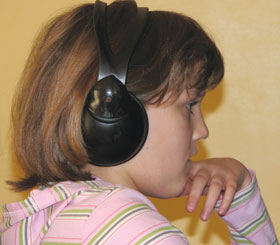

This is a frequently asked question and there is extensive debate over how long CCTV operators can be effective for. This is to some extent shaped by some of the research literature which indicates that optimal concentration spans vary from 20 to 30 minutes, depending on which research you are reading.
Unfortunately, marketers of video analytics have taken this quite literally, with even 10 minutes being seen as too long for people to concentrate according to some adverts. Of course if this was true, the roads would be even more of a bloodbath than they sometimes seem to be, with everybody switching off after a few minutes and not being able to concentrate on their driving.
Aviation X-ray screening is probably one of the most intensive concentration tasks in the world. At average at a European airport, screeners are taking five seconds to review a bag for a range of different threats which may be presented very differently within a bag, depending on three dimensional tilt and rotation. These screeners get rotated to other positions every 20 minutes, but are still required to concentrate in their other roles.
The change of focus and activity to pat down search, for example, gives other stimuli which are quickly taken in stride and the screener performance continues in another role. We don’t rotate sonar operators on ships or submarines every 20 minutes, or air traffic controllers off their work station. Concentration gets incorporated into what we can call task engagement in these types of activities, and it is influenced by a number of things including the person’s cognitive qualities, their personality, the environment in which they are working, the type of work stimulus they get, and their situational awareness.
I’ve been involved in some research looking at these types of factors for CCTV operators and with my colleagues, we have recently published are couple of articles in some international journals (see references below). The participants in the research had to perform detection tasks on a 90 minute video with incidents of varying levels of difficulty. No breaks were given during this period. It was a real world task detecting theft type behaviours in a mixture of settings some of which were difficult to see. There was a range of extremely interesting findings that came out of the research which answer a number of questions about operator concentration.
• Selecting the right people with good visual analysis skills and vigilance levels makes a big contribution to performance. Most of those with high visual analysis skills do well, while virtually none of those with poor skills perform well. In other words, visual analysis skills correlate very well with detection. You may be staffing your control room with people who simply are not up to the detection task.
• High performing people are good on a consistent basis over extended periods of time (90 minutes in this case) doing CCTV surveillance, poor performers are typically consistently poor in their detection rates, and medium performers are slightly more variable in how effective they are over time.
• Effective CCTV detection, even under difficult detection conditions, can extend past 90 minutes of continual intensive performance, although not in all people. We found in some cases that people were doing better in the last 30 minutes of the 90 minute trial than the middle 30 minutes. As indicated previously, poorer performers are more variable while stronger people maintain performance. What we call the vigilance decrement is not consistent with everybody, and in many cases there quite simply is not a decrement, especially for top performers. We can’t assume that everybody is just going to get tired and stop looking at things.
• People attempt to manage their attentional resources. You can’t be optimally effective 100% of the time, but you can manage how much you are concentrating at the most important times. The danger is that people manage themselves out of looking at things by avoiding the key tasks, but many others deal with this relatively effectively.
• If people look like they aren’t concentrating, they probably aren’t seeing anything. There are various behaviours of what we can call ‘mind wandering’ that you can look out for. They include the head drooping, shaking the head, staring into the distance, eyes closing frequently but briefly among others. The overlap between periods when people were showing behaviour was remarkably consistent with missing detection opportunities during those same times. In other words, the mind wandering behaviour is a direct indication of lowered performance effectiveness.
• People with experience in a dedicated surveillance role performed better than general control room operators whose surveillance was part of a broader range of roles. This could be people naturally gravitate to things they are good at, or possibly, because of the exposure they get used to it. However, taking security officers off a physical security job and placing them into a CCTV intensive environment is not going to deliver any significant performance.
Varying activities, frequent breaks, job rotation, and providing ongoing stimulus can all increase vigilance that help in managing and enhancing operator viewing. The observation and visual analysis qualities of the people involved also have a large role to play, not just in sustained performance, but in the actual level of performance itself. The role of the supervisor in ensuring that people are looking at the correct things, managing their attentional resources, and maintaining interest are all major factors in managing task engagement. The research demonstrates that CCTV operators can concentrate for extended periods of time, but also they would probably do it better if they are helped to manage the process effectively. Ultimately it’s not how long operators can concentrate for, it’s how long managers can assist in facilitating prolonged task engagement and effective performance in their operation.
References

Applied Ergonomics. 2015 Mar, 47:220-8.Epub 2014 Oct 25. Work exposure and vigilance decrements in closed circuit television surveillance. Donald F1, Donald C2, Thatcher A3.
Cognition, Technology & Work. February 2015, Volume 17, Issue 1, pp 121-130. Task disengagement and implications for vigilance performance in CCTV surveillance. Fiona M. Donald, Craig H. M. Donald
Dr Craig Donald is a human factors specialist in security and CCTV. He is a director of Leaderware which provides instruments for the selection of CCTV operators, X-ray screeners and other security personnel in major operations around the world. He also runs CCTV Surveillance Skills and Body Language, and Advanced Surveillance Body Language courses for CCTV operators, supervisors and managers internationally, and consults on CCTV management. He can be contacted on +27 (0)11 787 7811 or [email protected]
| Tel: | +27 11 787 7811 |
| Fax: | +27 11 886 6815 |
| Email: | [email protected] |
| www: | www.leaderware.com |
| Articles: | More information and articles about Leaderware |
© Technews Publishing (Pty) Ltd. | All Rights Reserved.